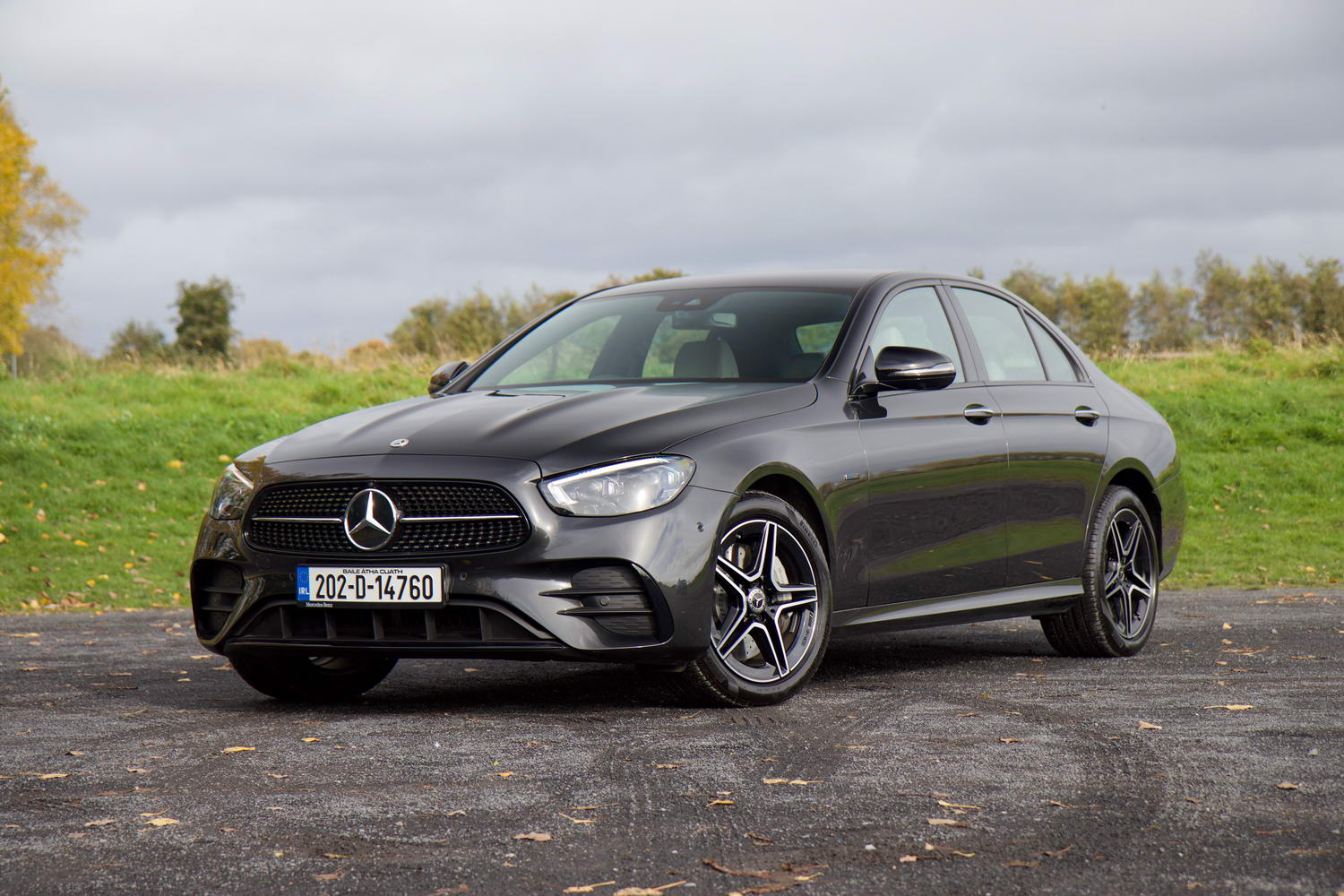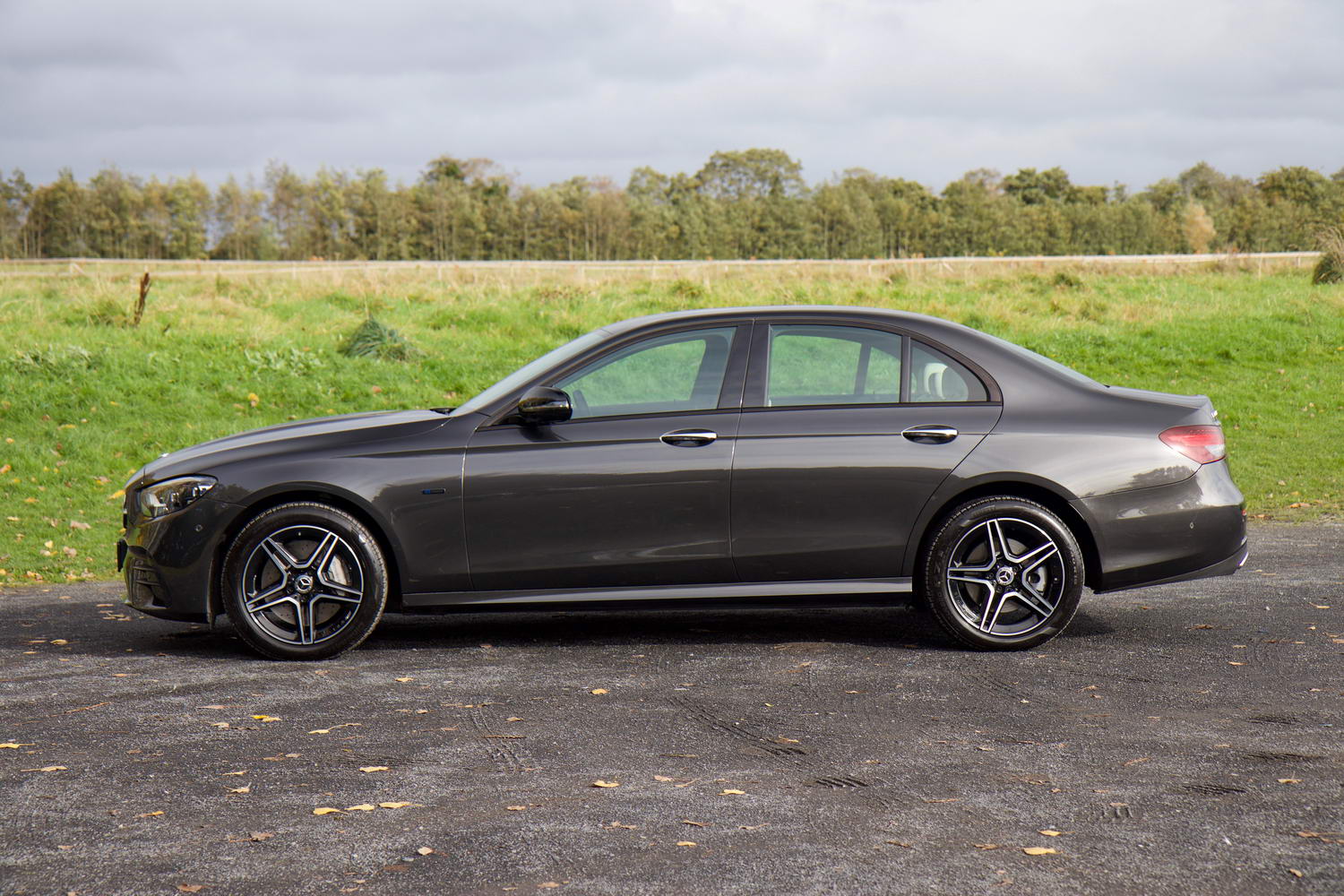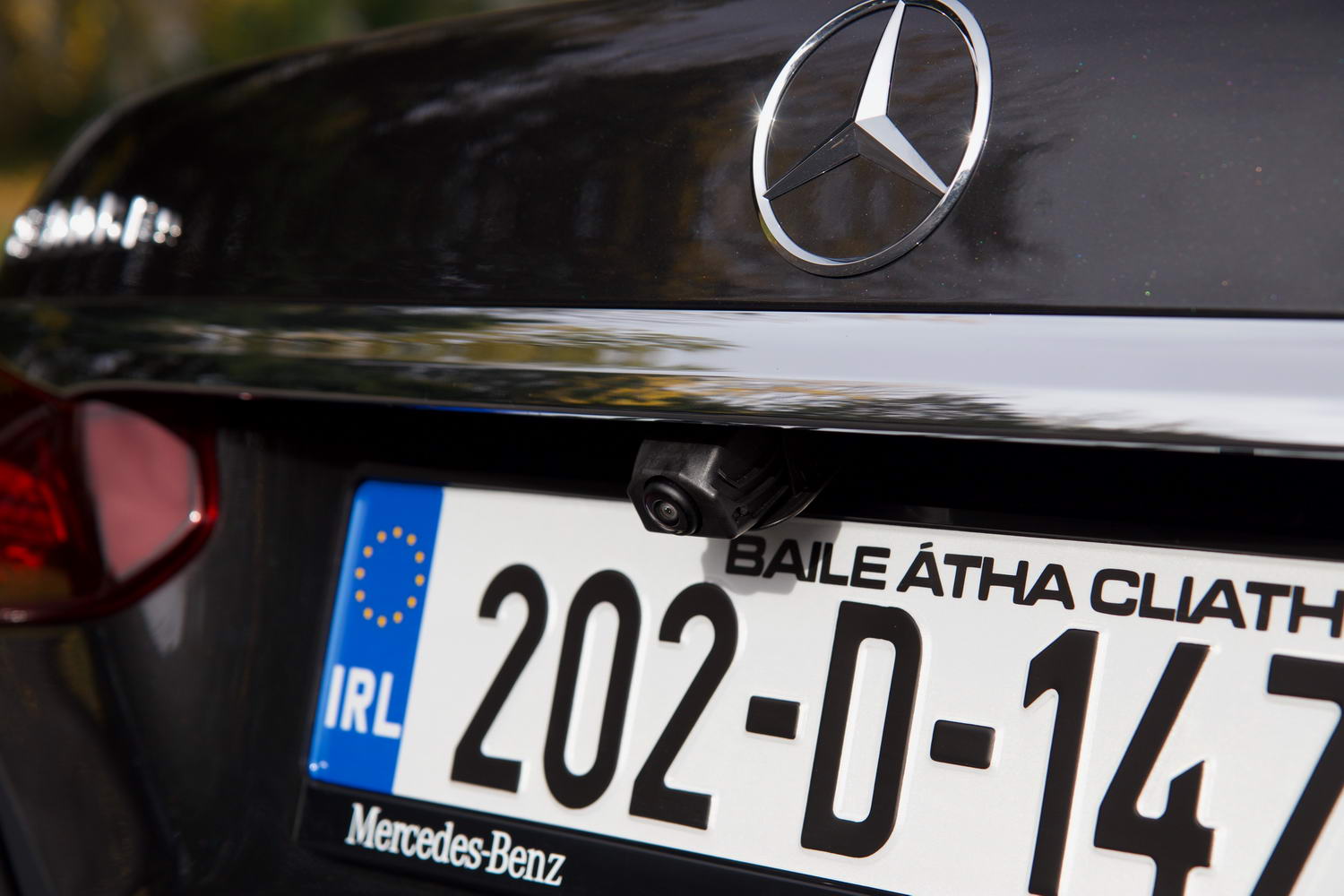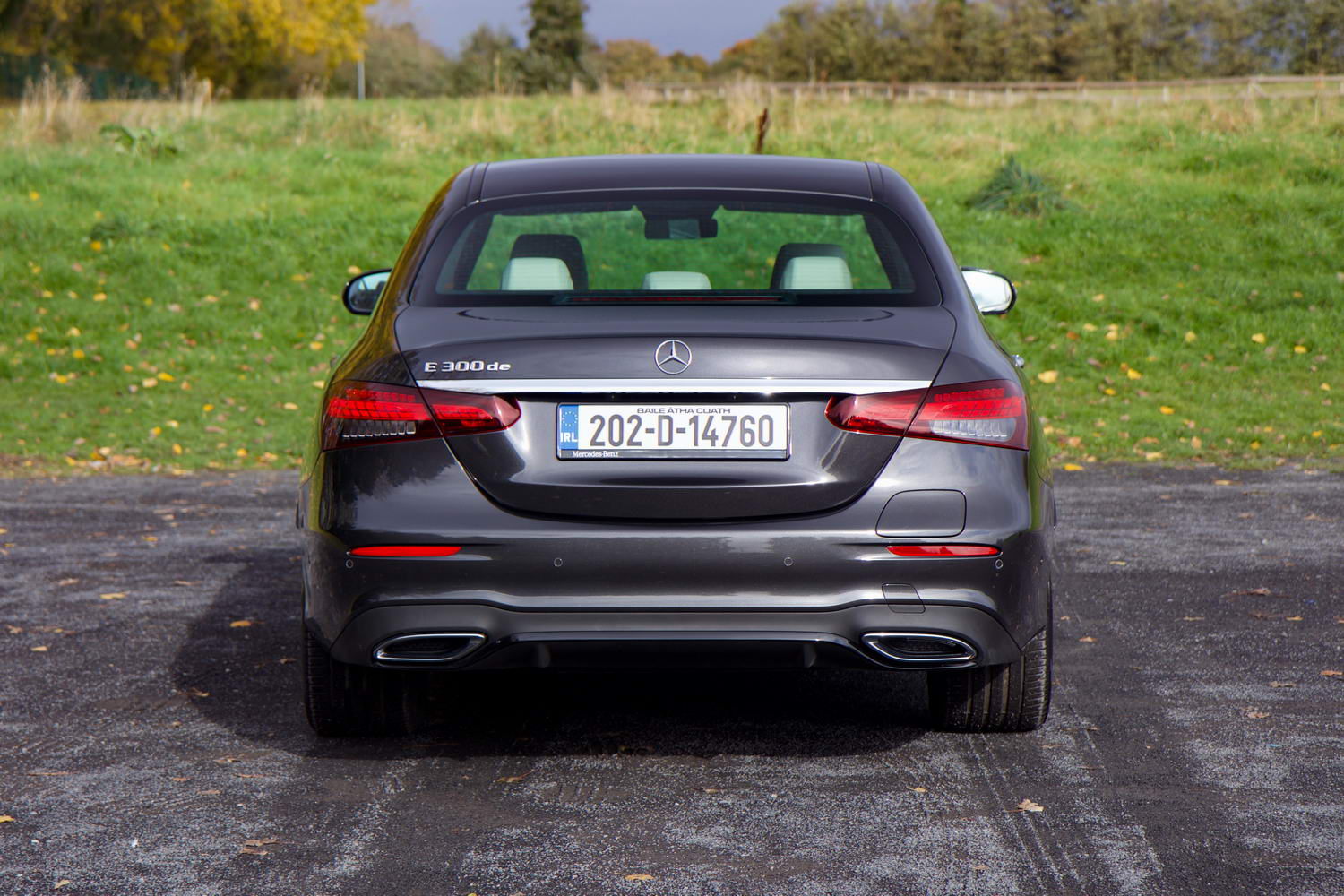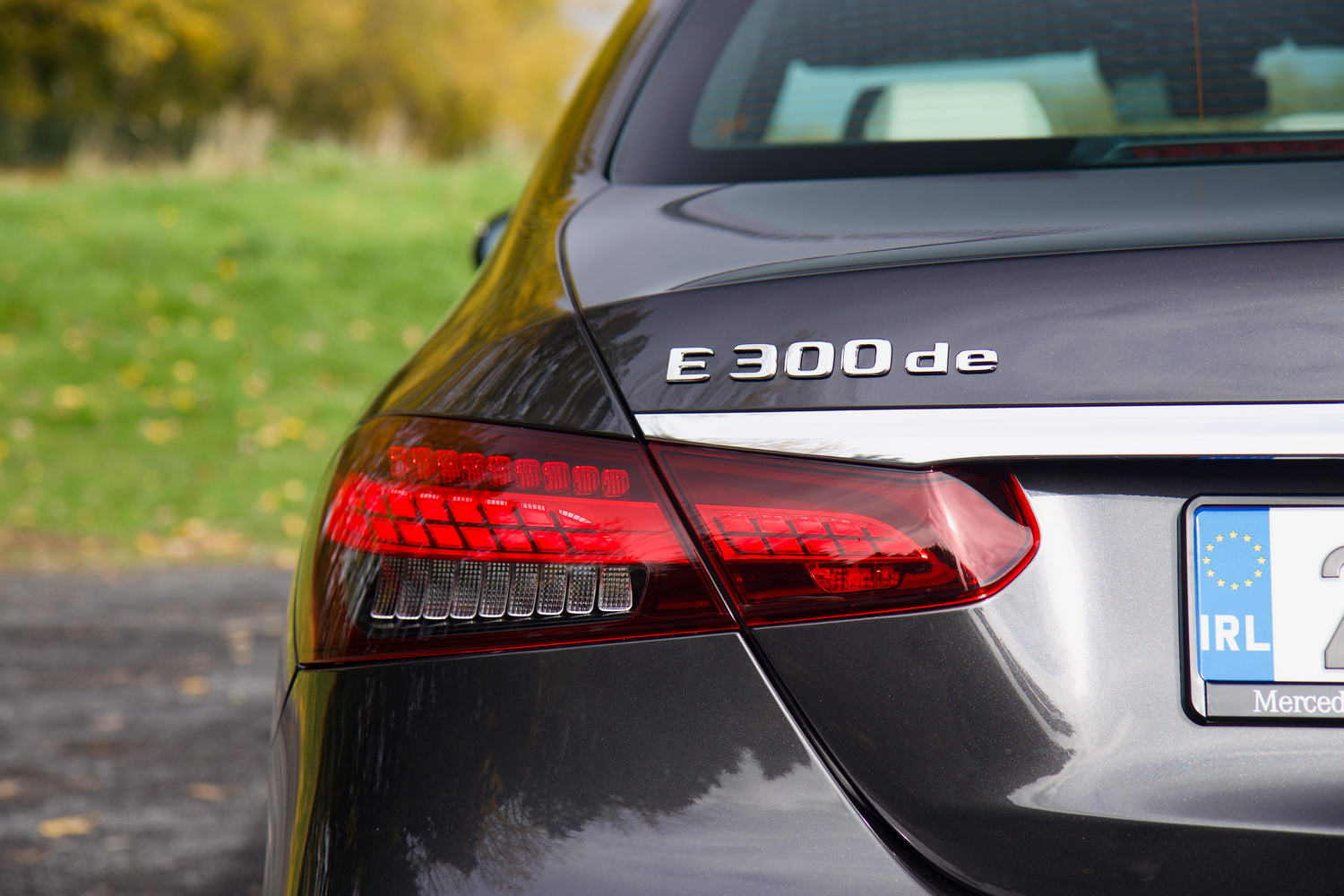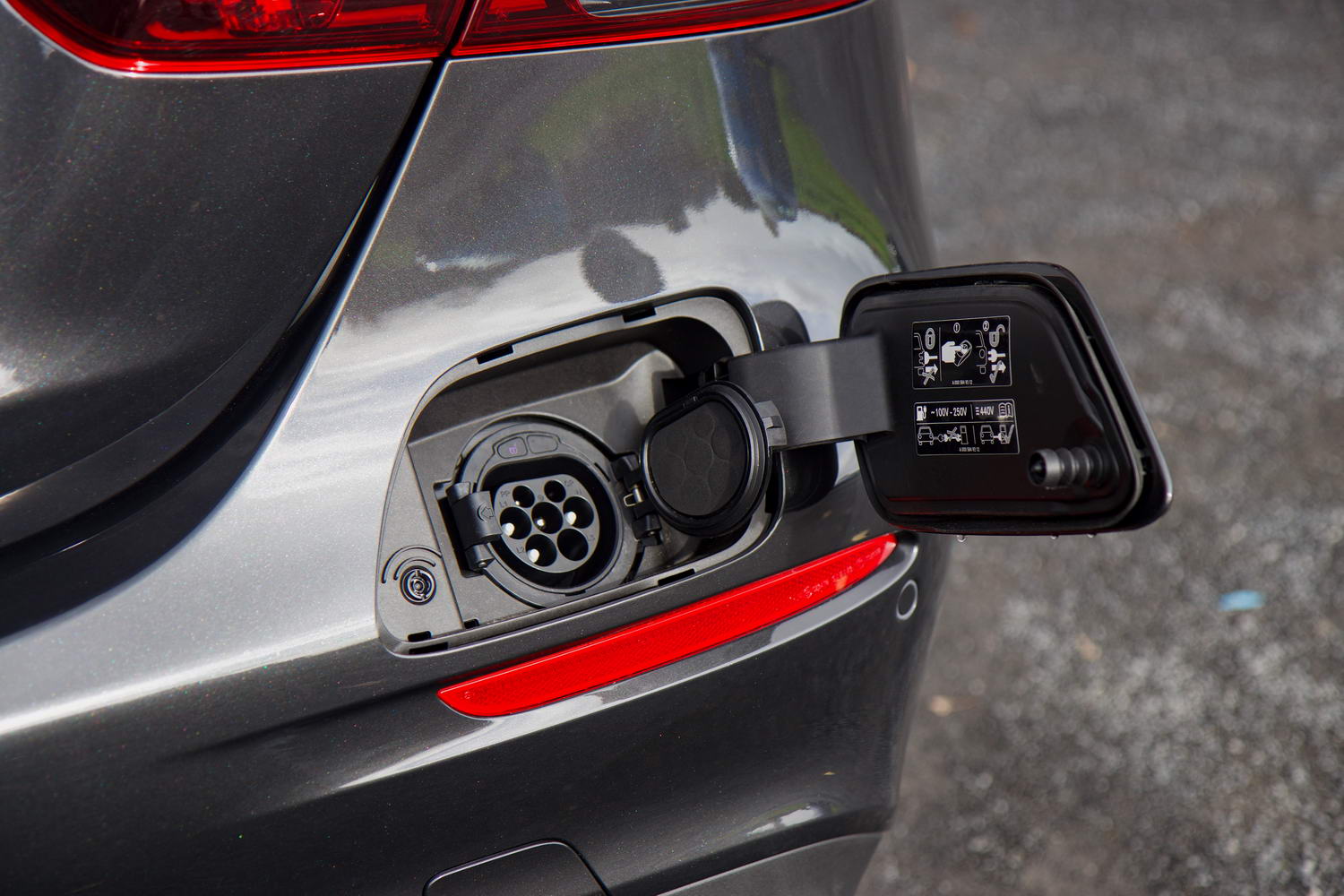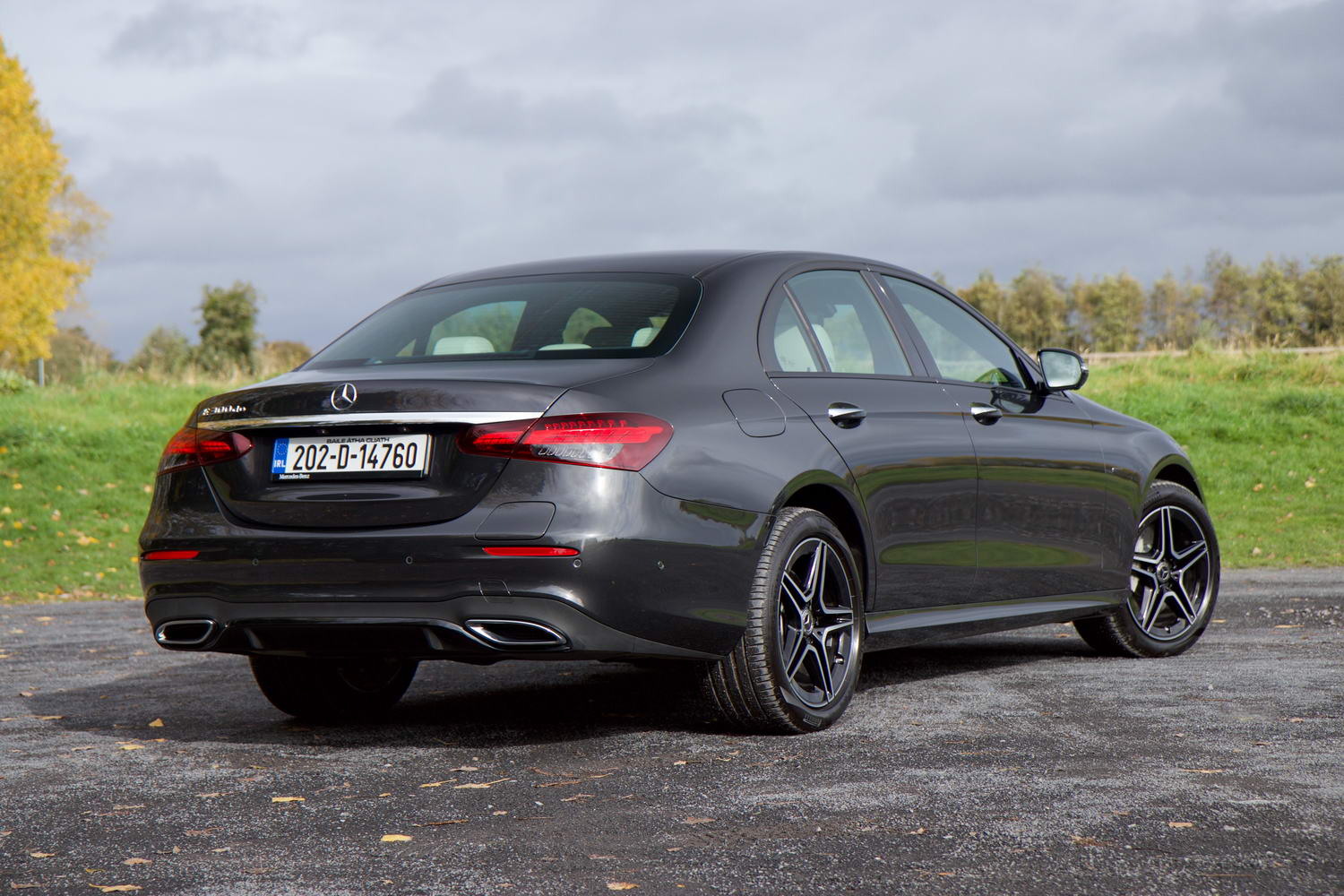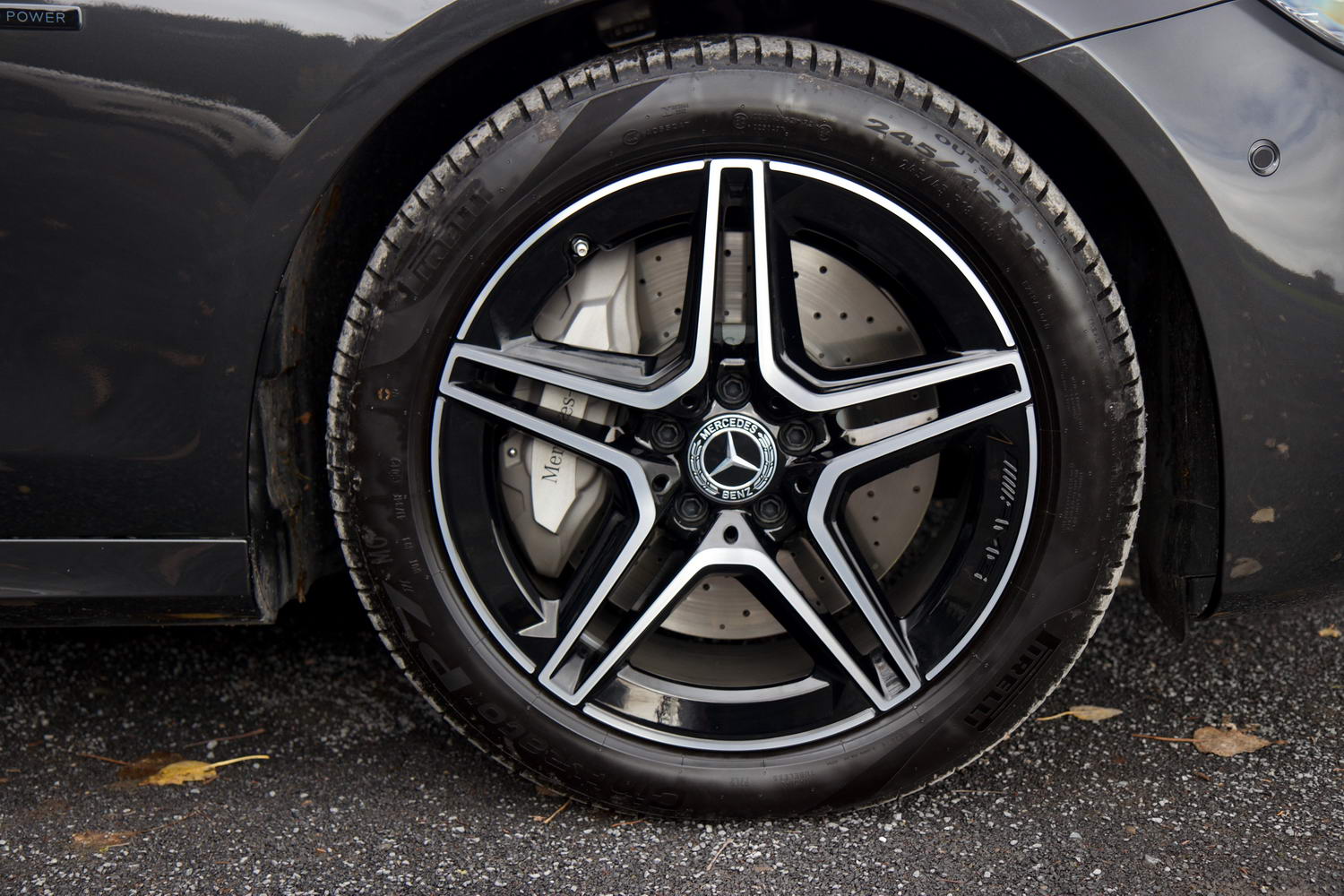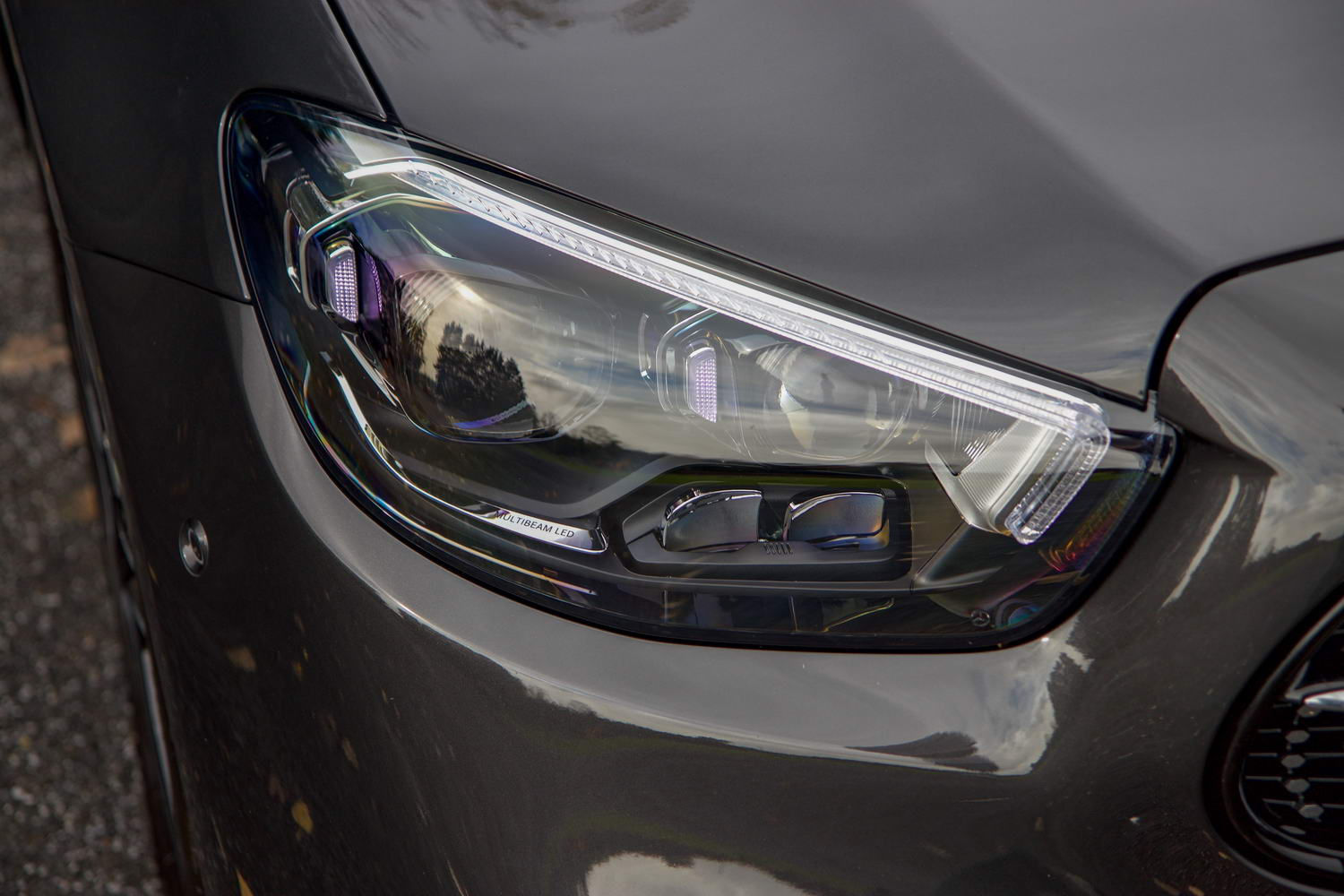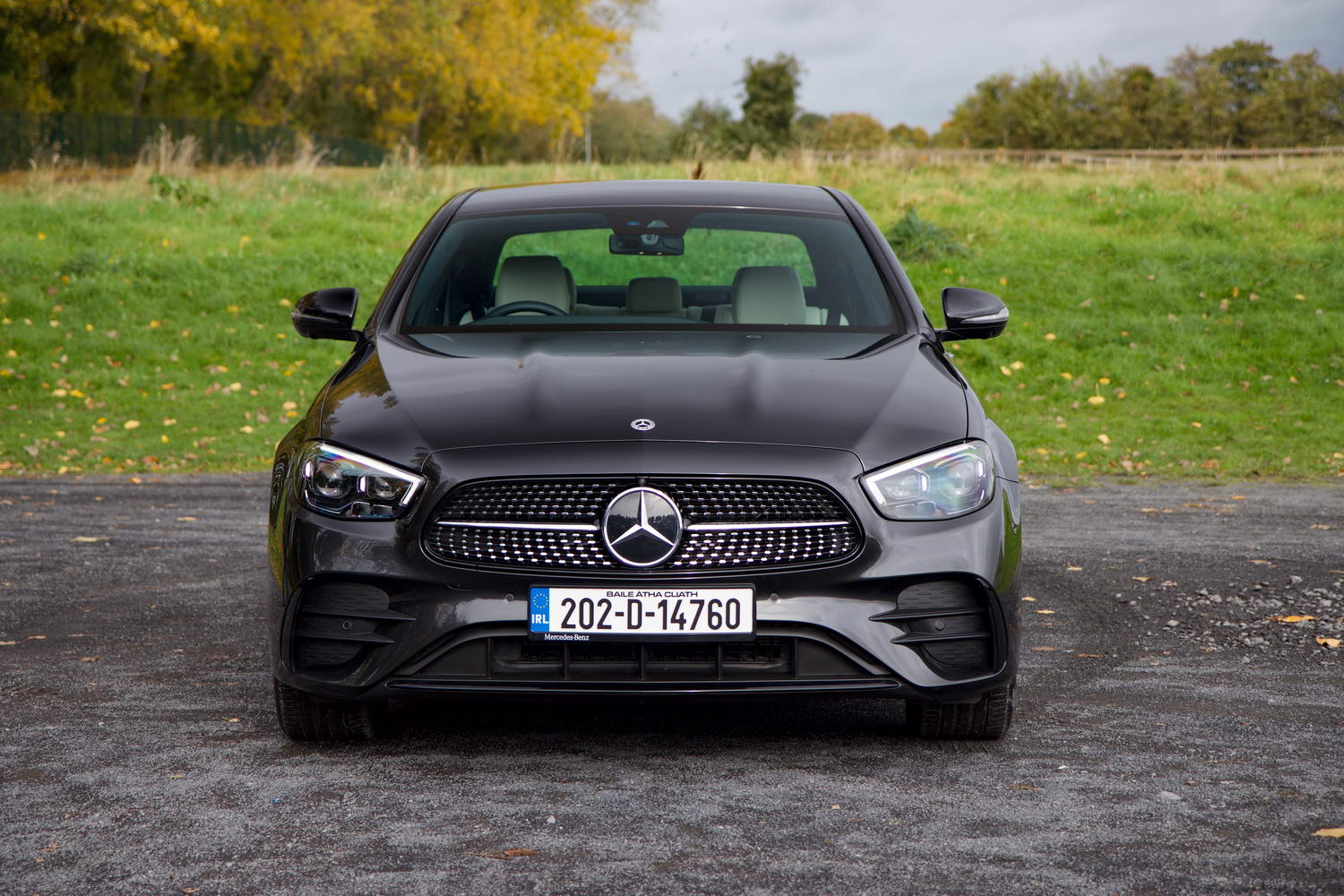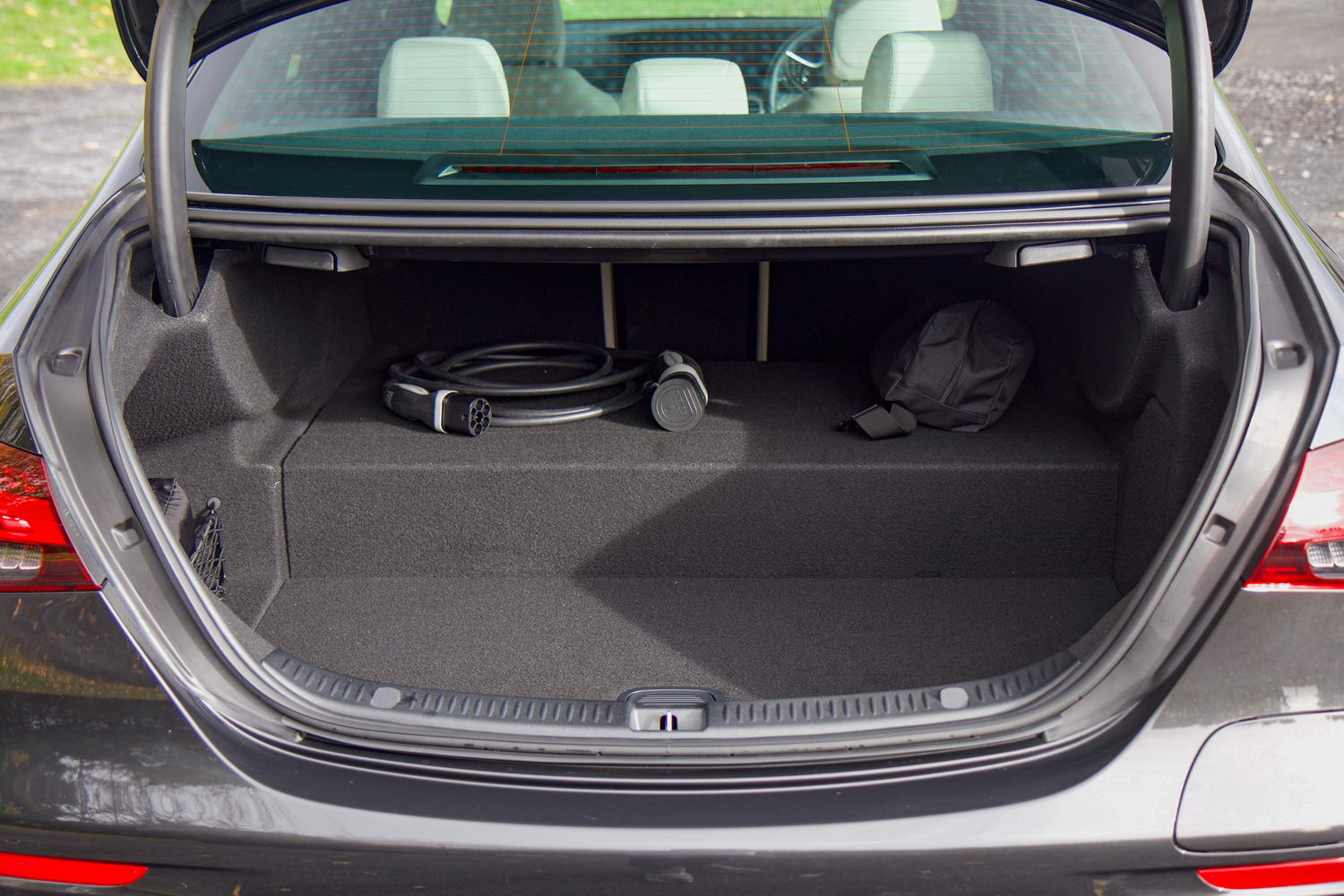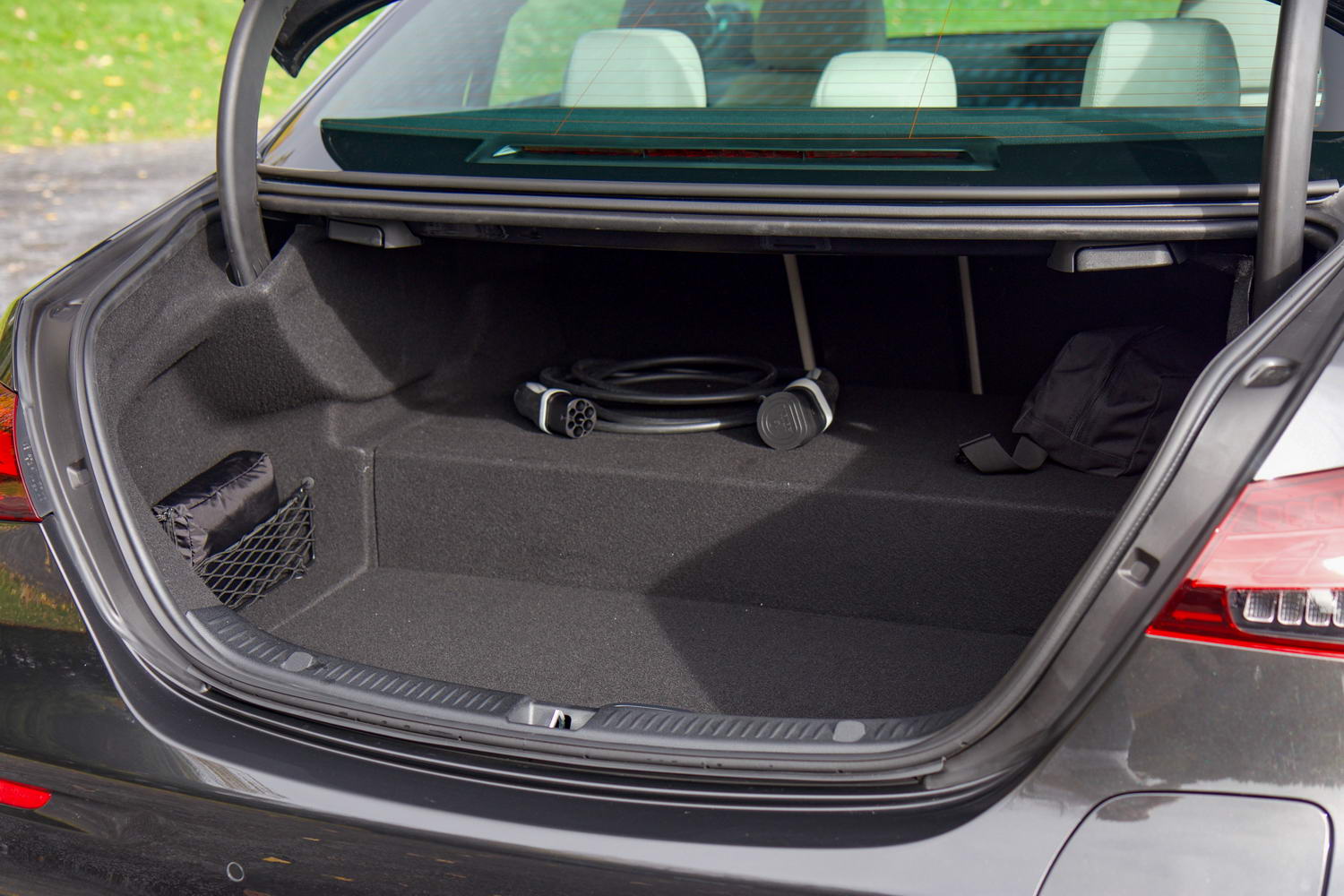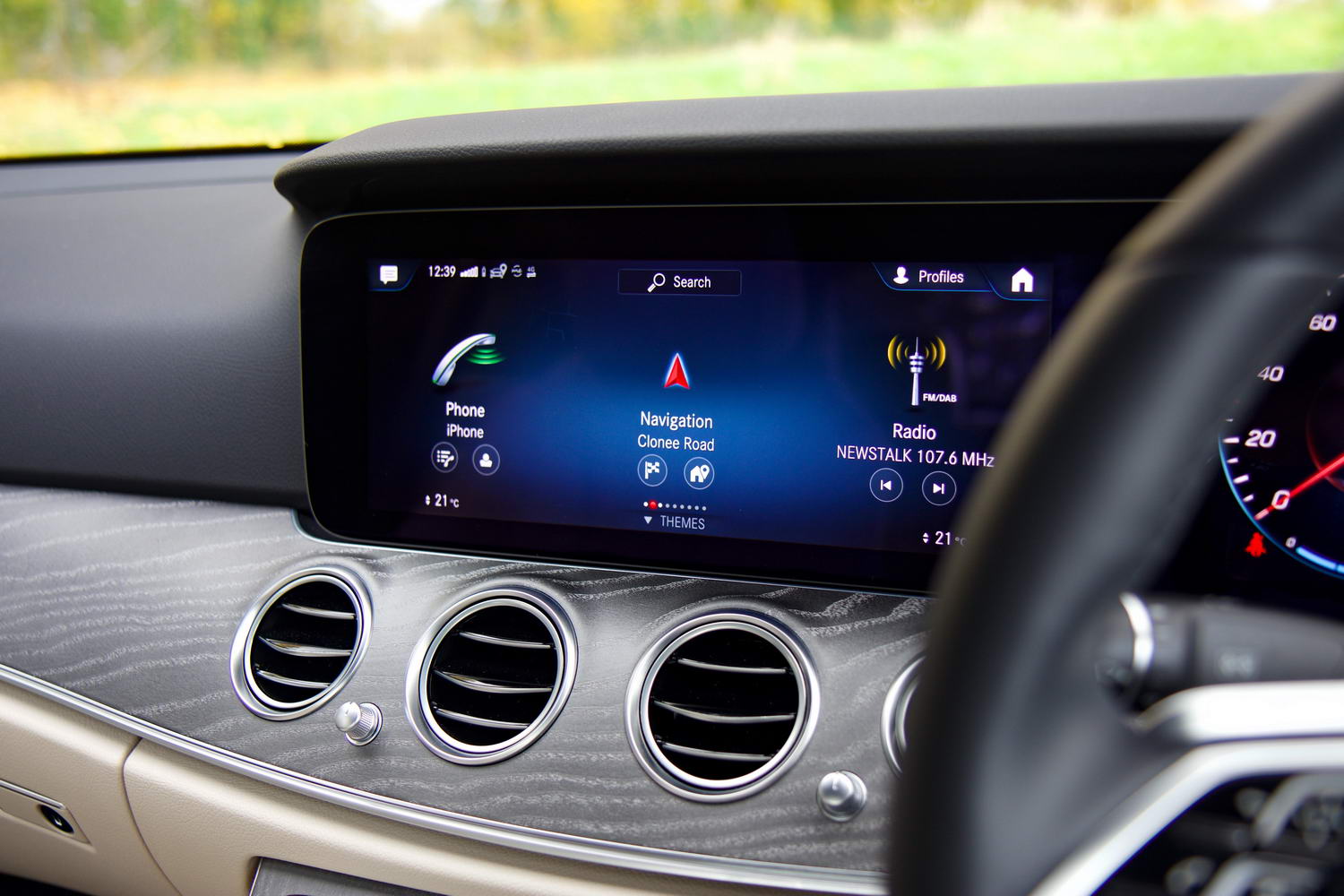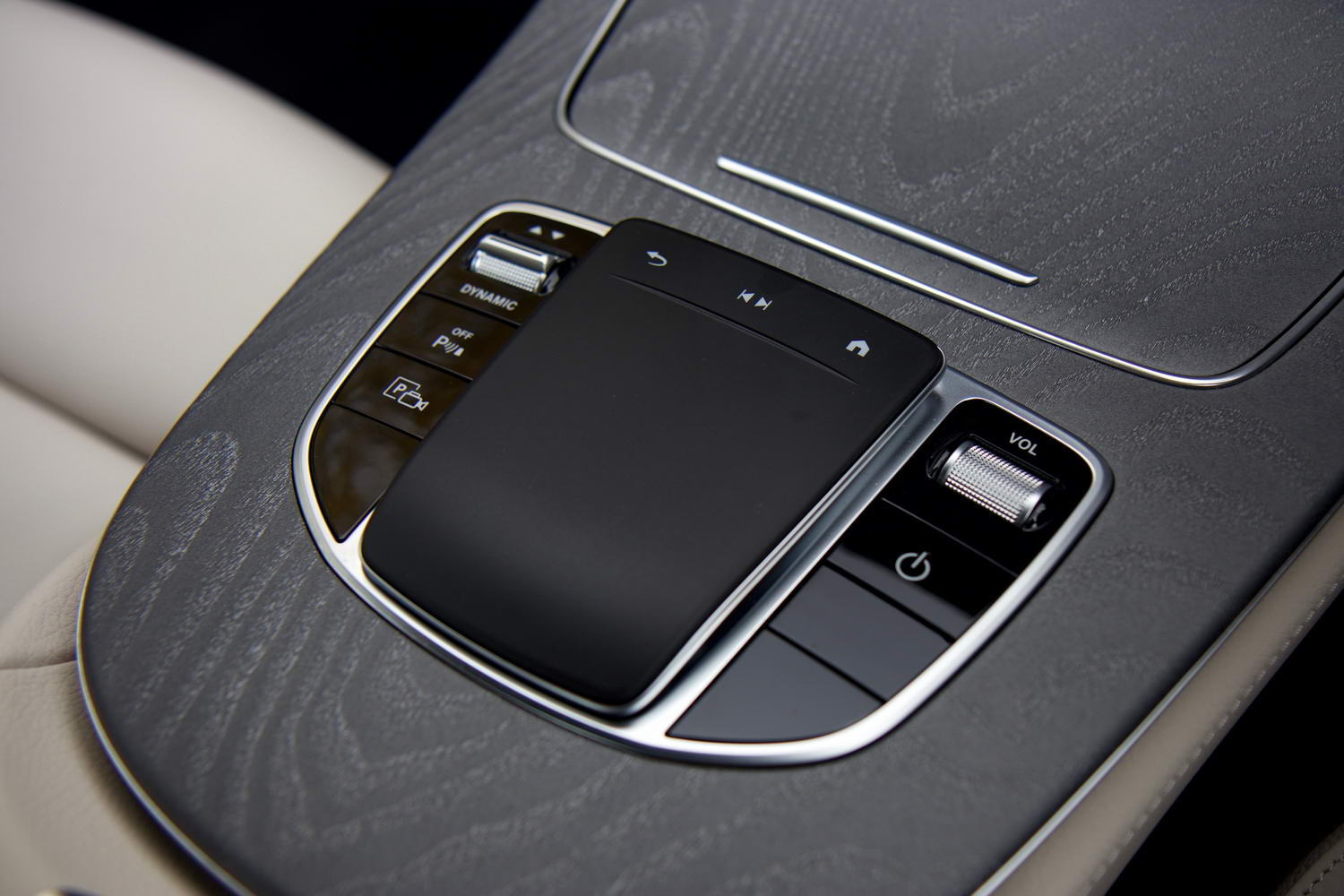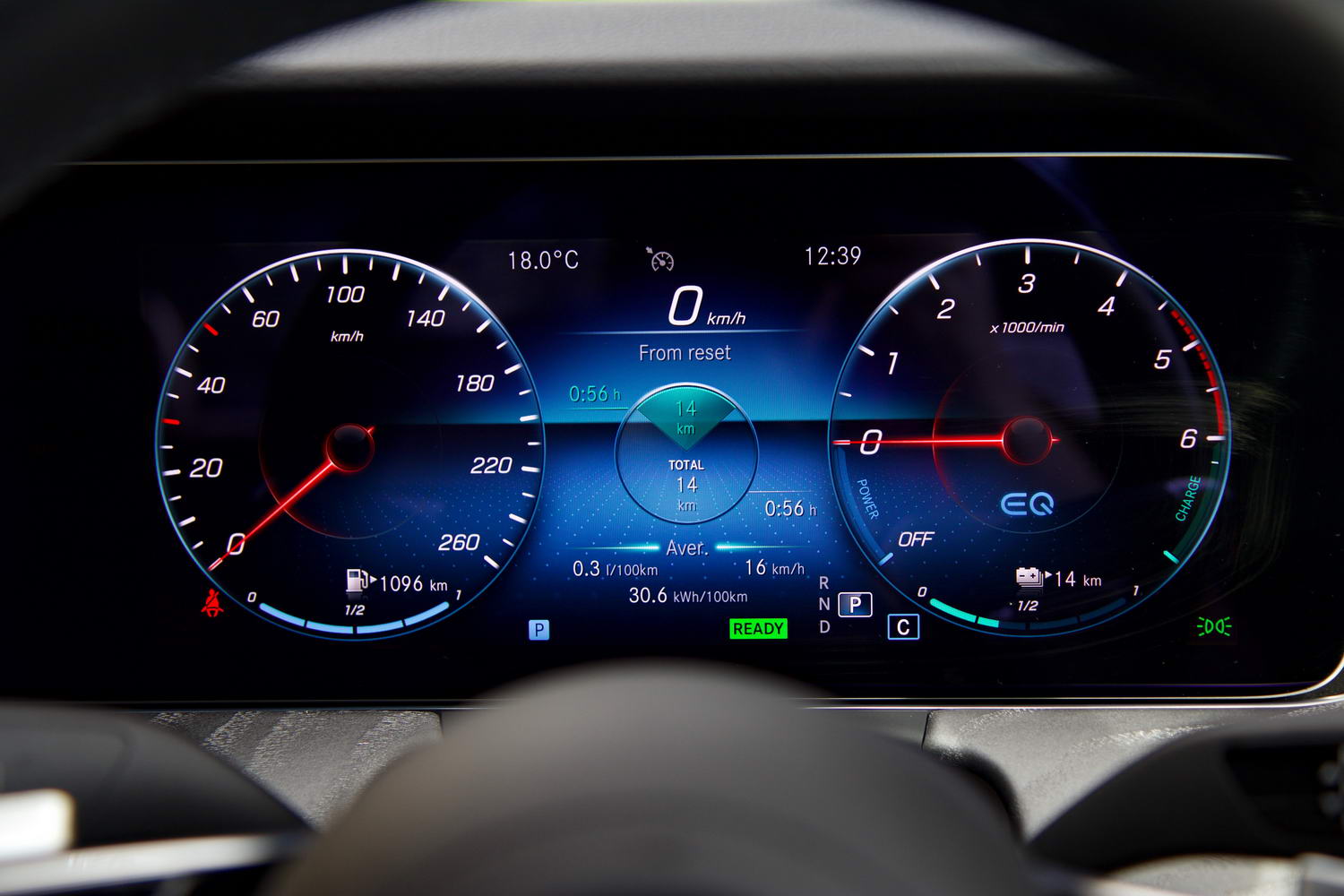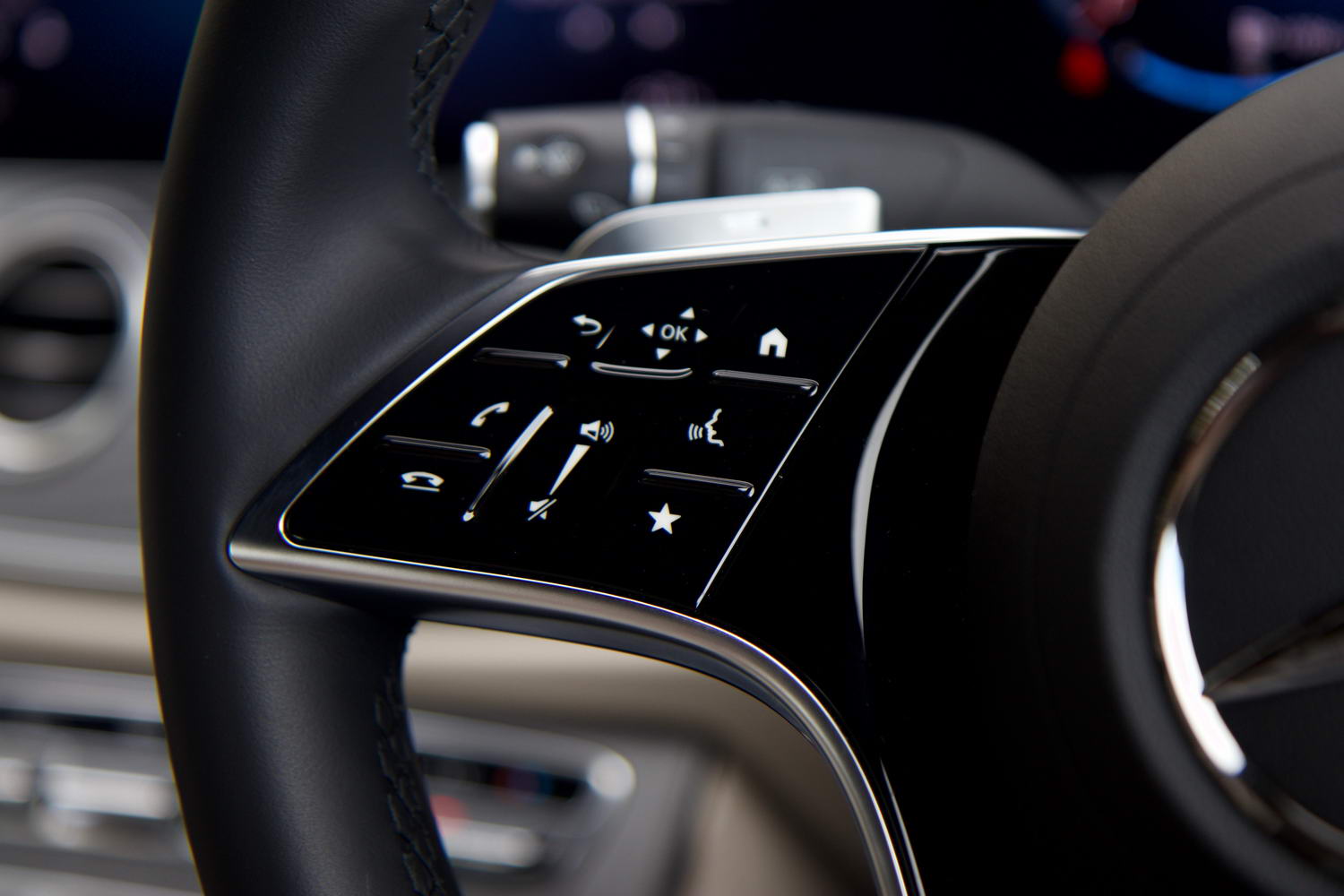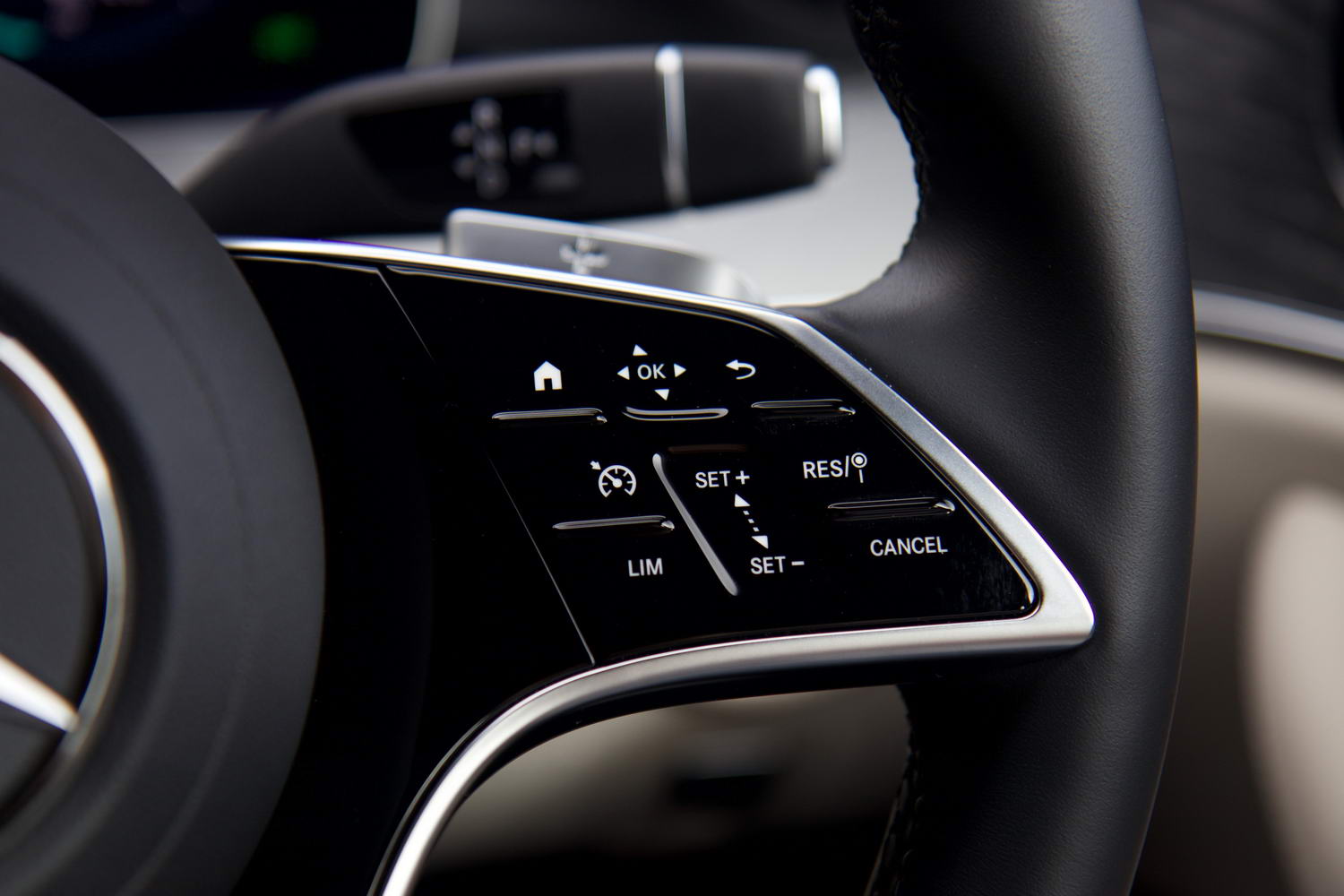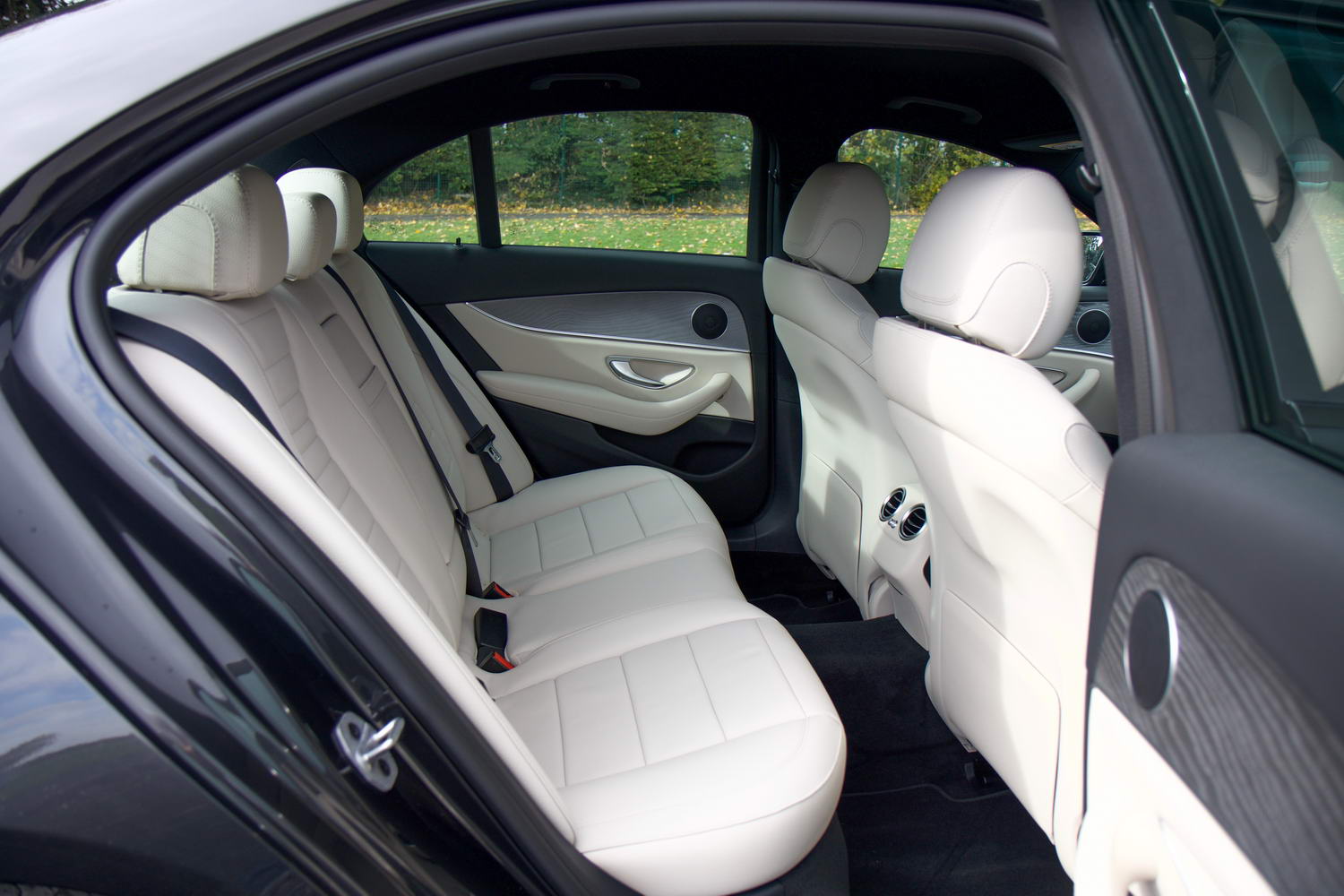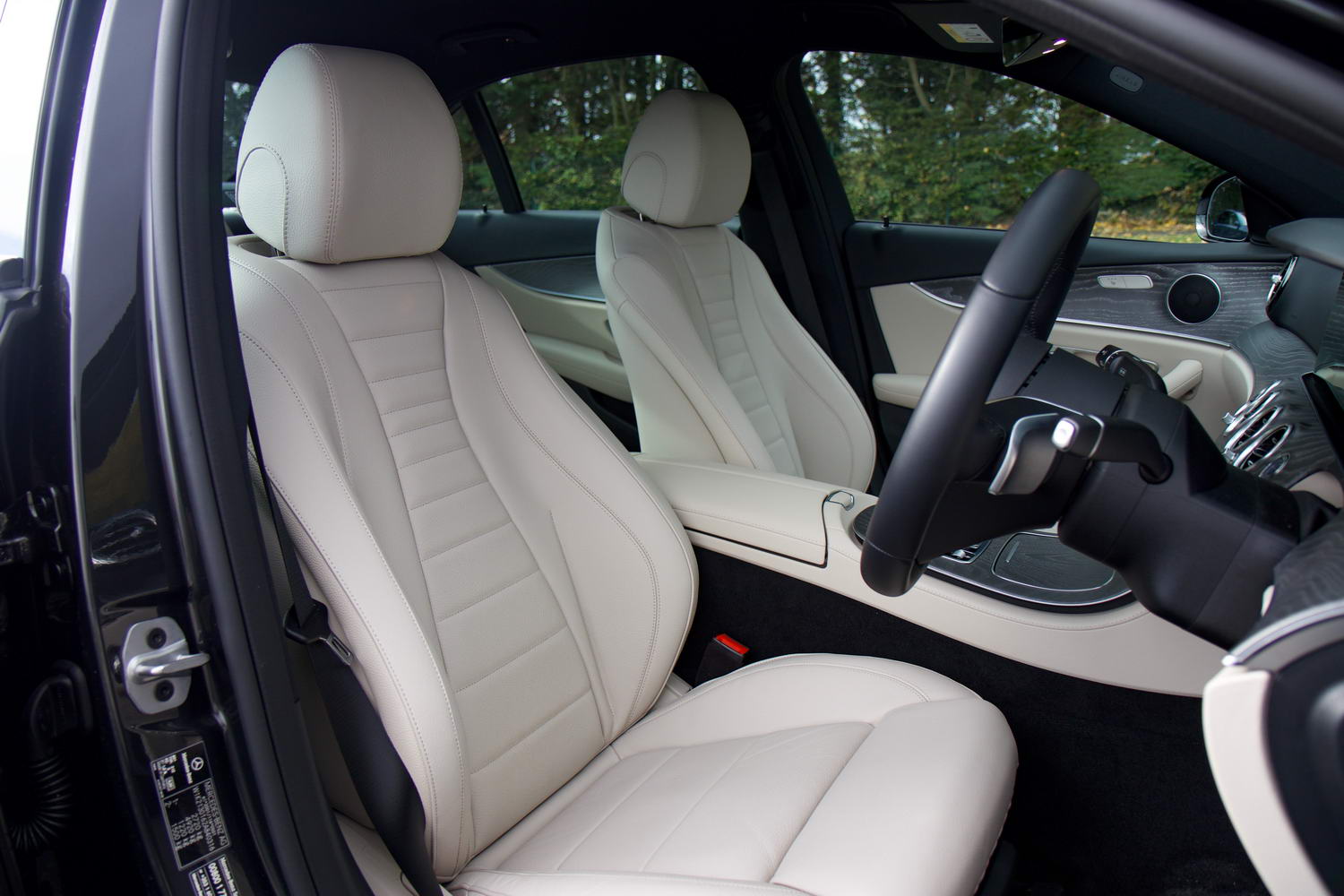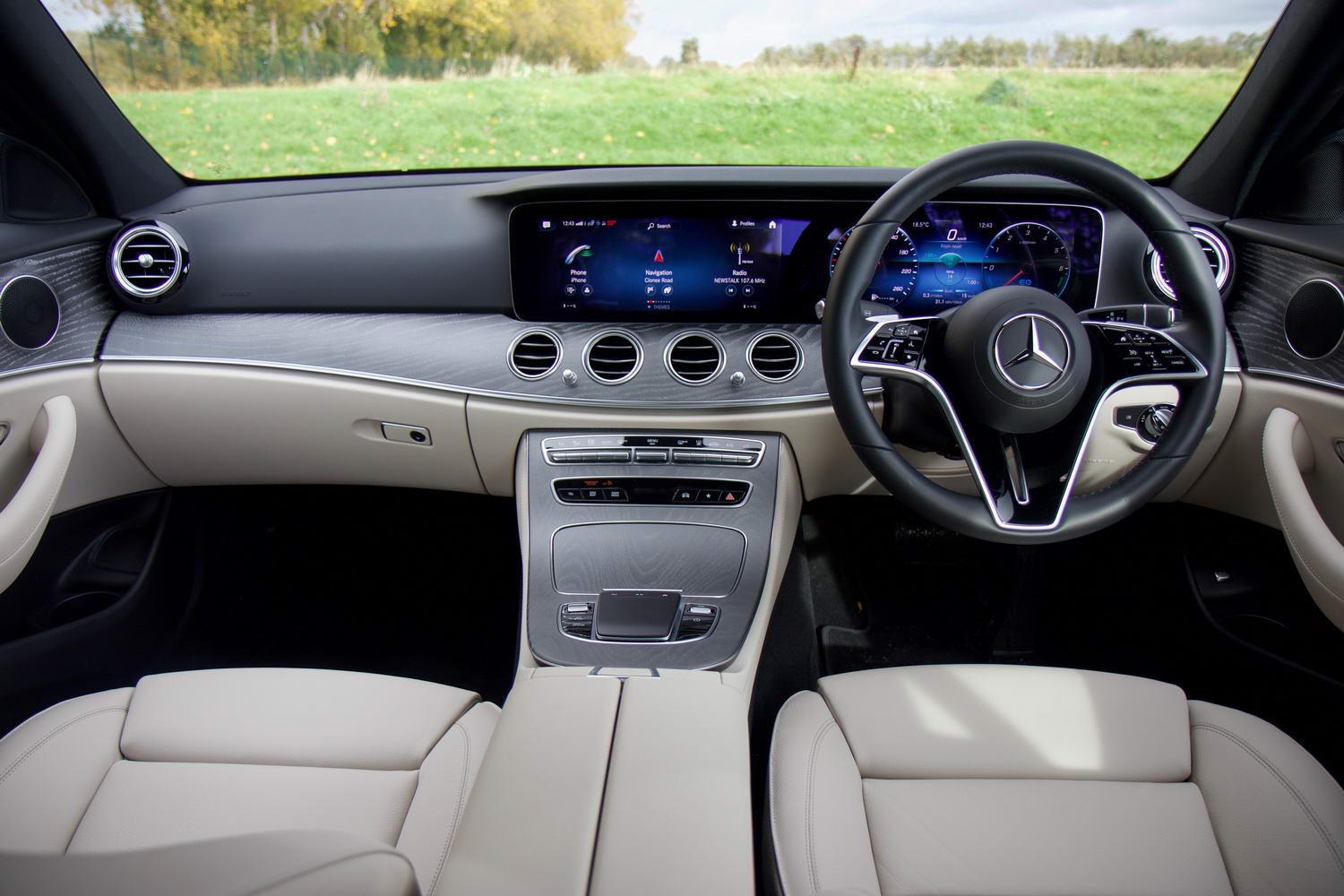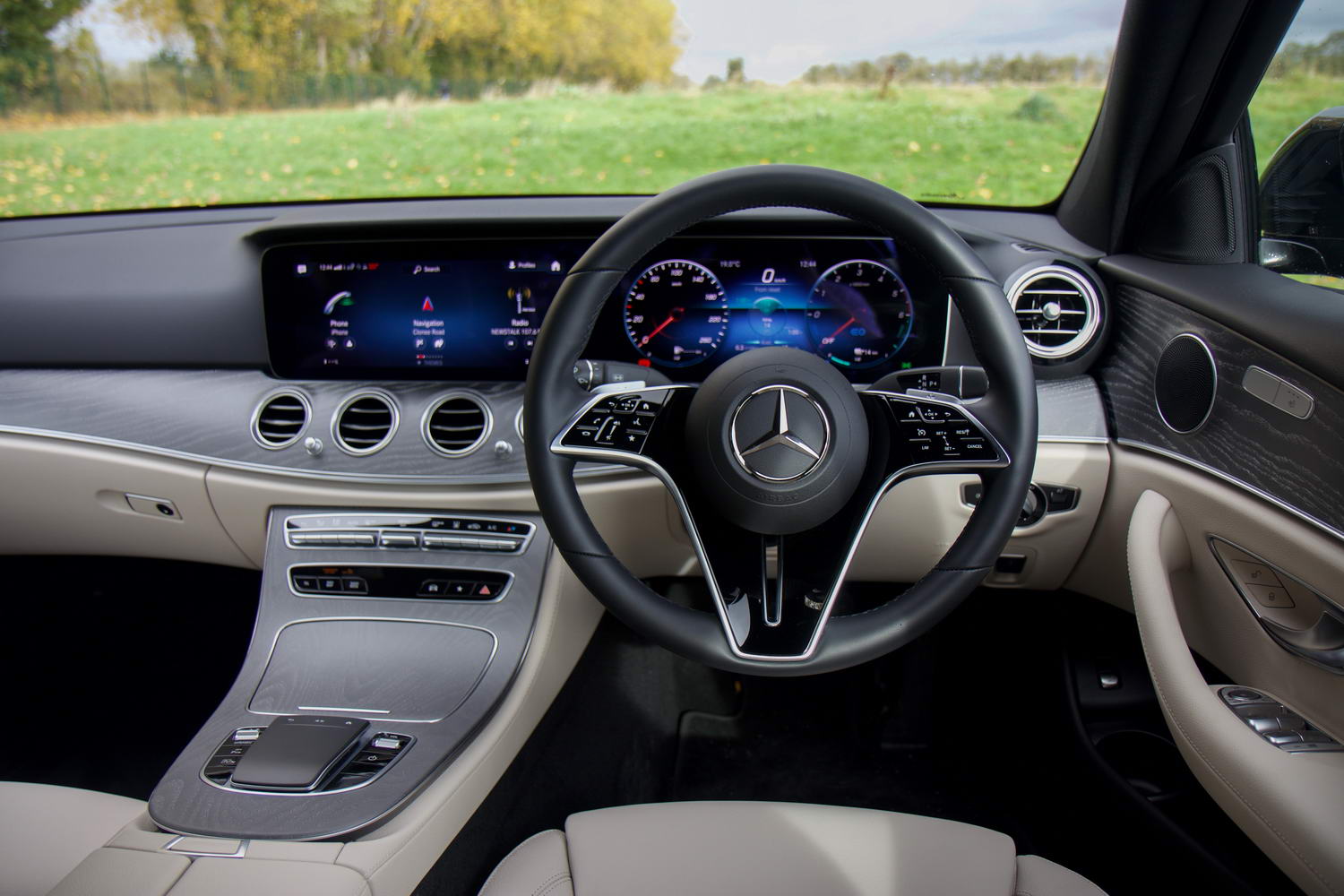Mercedes-Benz E-Class overview
Fourteen million. That's how many E-Classes Mercedes-Benz has sold since the model's introduction, assuming that - as does Mercedes itself - you include all of its mid-size saloons way back to the 1946 170V four-door. Since then, the medium-sized Mercedes saloon (and latterly estate) has established itself as the symbol of upwardly mobile family motoring, as comfortable with the concierge of a high-end hotel crisply opening the door for you upon arrival as it is being loaded with kids and dogs for a weekend at the seaside. Or, for that matter, being painted beige and spending its life shlepping around Stuttgart as a taxi. This truly is the people's Benz, and in a world of confusing SUVs and crossovers, its shape seems sometimes like a life raft on a stormy sea - comforting and familiar.
Now in its tenth generation (maybe 11th, depending on how you view that 170V in the Mercedes pantheon), the E-Class has been given a major round of updates to keep it feeling fresh in the face of competition from updated rivals such as the BMW 5 Series and Audi A6, not to mention the likes of the Jaguar XF, Lexus ES, and even the Maserati Ghibli.
You'll spot this updated E-Class (officially the Mercedes-Benz W213) from its new radiator grille, which is a little wider and which droops slightly down at the corners, where it used to turn slightly upwards - indicative of a more serious appearance for more serious times?
The headlights, also redesigned, are now LED units across the range, with the option of high-tech Multibeam LED technology. The front bumper is also new, and Mercedes says that the design changes on the outside are as much about tweaking and improving the E's aerodynamic performance as they are changing the styling.
Inside, you now get the 'digital plank' MBUX dashboard as standard (previously, the most basic E-Classes still came with analogue dials - heaven forfend...), which comes with two 10.25-inch screens, or an optional 'widescreen's setup that uses twinned 12.3-inch screens. The system also gets the 'Hey, Mercedes' digital voice assistant, a new steering wheel with touch-sensitive pads instead of buttons and augmented reality for the navigation. A head-up display is optional.
There have also been updates to the comprehensive safety package, which now includes, optionally, more sophisticated active cruise control, an uprated automatic parking system, an active emergency braking system that can stop you turning into the path of another vehicle, emergency steering assistance and blind-spot assistance that also takes over the steering in an emergency.
On the mechanical front, there is an updated line-up of petrol and diesel engines, all of which at the very least now come with mild-hybrid assistance. Aside from more specialist AMG versions, at the top of the range now sit a septet of plug-in hybrids, with either petrol or - almost uniquely - diesel power, and the option of 4Matic four-wheel drive. It's the diesel plug-in hybrid, badged 300 de, that we're testing here.
The Mercedes E-Class model range
The updated E-Class range kicks off with a 2.0-litre turbocharged 197hp E 200 petrol model, priced from €55,710. That can be had, as can all E-Class models, in Avantgarde, Exclusive, AMG-Line Exterior, or full-on AMG-Line trims. What's the difference between AMG-Line Exterior and AMG-Line? Basically, it's down to some small styling and equipment differences. If you want the classical Mercedes star standing proud of the bonnet, then you need to go for an Exclusive model - all the rest get a big chrome star in the centre of the grille instead.
There's also a 258hp version using that 2.0-litre petrol engine, badged E 300 and priced from €61,135. Or you could have a plug-in hybrid petrol model, badged E 300 e, starting from €61,830, which comes with the AMG-Line Exterior pack as standard. Four-wheel drive is optional on that one, priced from €66,775.
Diesel diehards can have a 194hp 2.0-litre turbodiesel, badged E 220 d, for €55,790 in Avantgarde trim, or can upgrade to four-wheel drive for €60,590. There's also a 265hp E 300 d, starting from €71,645 in Avantgarde trim.
Our test E 300 de diesel plug-in hybrid starts from €63,755 inclusive of grants and rebates, in AMG-Line Exterior trim as standard. You can upgrade to four-wheel drive for €68,525.
At the very peak of the E-Class range are the high-performance AMG models (which are true-blue AMGs, not regular cars with styling packs) starting from €121,700 for the straight-six engined E 53, rising to €156,620 for the 4.0-litre V8-engined E 63 (with 571hp) or the all-get-out E 63 S for €173,285.
Mercedes Ireland, at the time of writing, has a 4.9 per cent interest PCP finance offer for the E-Class with monthly repayments of €608.99, a deposit of €16,483 and a final payment of €20,879 after three years. Go to www.mercedes-benz.ie for up-to-date finance plans.
Standard equipment on a basic Avantgarde E-Class includes adaptive high-beam assistant, digital radio, folding rear seats, those LED headlamps we mentioned earlier, connected navigation, rear-view camera, traffic sign assistant, two USB sockets in the rear (of the new USB-C type, so get some adaptors), a wireless phone charger and 17-inch alloy wheels.
To that, our AMG-Line Exterior test car added 18-inch alloys, adaptive suspension dampers with Dynamic and Comfort modes, larger front brakes, AMG styling, blind spot assistant, auto-dimming mirrors inside and out, metallic paddle-shifters for the nine-speed automatic gearbox, heated front seats and the full-on 'Widescreen' dashboard.
From the options list were added an electric boot lid, grey open pore ash wood trim, 'Macchiato' leather seats, the 'Night Package' (which de-chromes some of the exterior elements and adds rear privacy glass) and the 'Premium Pack', which includes the high-tech 'Multibeam' LED headlights, automated parking and a 360-degree camera system, keyless ignition and entry and augmented reality overlays for the navigation, for a final list price of €70,839.
Officially, 'our' 300 de has CO2 emissions of 33g/km, giving it annual motor tax of just €140.
The Mercedes E 300 de interior
If we said that the E-Class's interior was 'sumptuous' would that pretty much cover it? Yes, it probably would, but there's also a wealth of detail to go through. The biggest changes that you'll notice, compared to the outgoing E-Class, are a new steering wheel (which looks, rather entertainingly, like a Star Wars TIE Fighter from some angles) and the touch-pad controller for the infotainment system. Arguably, this latter addition could be described as a backwards step from the old click-wheel setup - it can be fiddly in the extreme, and is far too easy to set off with a careless movement of your left hand. Still, you can also use the central infotainment display as a touchscreen, or indeed control it using the haptic pads on the steering wheel.
Ah, yes - those haptic pads. Another backward step, I'm afraid. These pads - which respond to a combination of slides and touches - are if anything even more fiddly than the trackpad, and have kind of the opposite problem: they can be maddeningly insensitive to your touch, which can lead to uncouth swearing and much stabbing at the wheel. On top of that, we noticed that the software on the big screens could be, at times, a little slow to respond, and at one stage got locked in a minimal information mode, which required a stop and restart to clear. At times, one does wonder quite what was wrong with buttons and dials...
On the upside, the MBUX screens are, as ever, entertainingly rich with features and information, to the point where you really need to set aside a good hour or two to work through all the various functions and menus and get everything set up to your preference. The displays look exceptionally expensive, and the navigation screen in particular looks almost as if you could step into the map.
There is also a mood lighting system that can be adjusted to more or less any colour you like, and instrument displays that can be tailored through a multiplicity of different dials and information panels. Personally, we prefer the retro-eighties vibe of the 'Sport' displays, with their yellow numbers and dials (all very 190E Cosworth...) but to each their own.
With the automatic gear selector mounted behind the steering wheel, on the right (there is no manual gearbox option for the E-Class anymore), there's plenty of storage and stowage space down on the centre console, including a space under the armrest accessed by twin 'butterfly' lids. Where the gear lever might once have sat is now a space for two cupholders, the wireless phone charging tray and a combination of USB-C socket and a 12-volt socket. There are another two USB-C sockets under the armrest, incidentally.
Behind the steering wheel on the left is the traditional Mercedes single stalk that controls wipers, high- and low-beam lights and indicators. Alas, the old simple and intuitive Mercedes cruise control stalk has now gone, and been replaced by those maddening steering wheel haptic buttons. Again, nothing wrong with physical buttons folks...
If it sounds as if we're criticising the E-Class's interior... well, we are but only in the sense that it contains so many of the irritating high-tech-for-high-tech's-sake additions that exist in pretty much all new cars now, bar the cheapest. The fundamentals of the E-Class's cabin are actually about as good as it gets. The seats are wonderfully comfortable and supportive, the driving position just about perfect (although the combination of manual and electric adjustment of the seat means you need to spend some time fiddling to find the sweet spot) and the quality levels excellent - reminiscent of Mercedes late-eighties quality peak, in fact. While this may be an expensive car, as soon as you sit behind the wheel, you can see where every cent has been spent.
Space in the back is possibly a little less impressive - it's fine, indeed maybe even good, but I can't shake the feeling that this E-Class has less room for feet and knees than the old W212 model. That said, with the same gorgeous Macchiato leather and a cabin that's quite airy even without the optional panoramic glass roof, most people who climb into the back won't feel short-changed.
For families, there are ISOFIX points in the outer two rear seats, and in the front passenger seat (with automatic passenger airbag deactivation), and the rear doors open nice and wide to make getting in and out rather easier (all that taxi experience clearly paying off...).
Actually, the only glitch in the Matrix here is that the E 300 de loses so much boot space. Thanks to the need to package both a battery and a fuel tank, space in the boot has been reduced from a standard 540 litres to a miserly 370 litres - less than you'd get in the back of a VW Golf. A good excuse to trade up to the more handsome and more practical E-Class Estate, perhaps? Surely everyone knows that the best E-Class is always the estate...
The Mercedes E 300 de driving experience
What hits you first, once the E 300 de is rolling, is just how refined it is. Obviously, that's because it starts - as long as there's sufficient charge in the 13.5kWh battery - in electric mode, so you glide easily and effortlessly away. As with many plug-in hybrids, you'll notice a little more suspension noise and the odd interior creak and groan rather more, thanks to the lack of a running engine to cover them up, but even when the 2.0-litre diesel does crank into life, you might actually miss it. Rev hard, and it obviously makes itself known, but considering that we once used to heavily criticise four-cylinder diesel Mercs for their aural uncouthness, this is seriously close to silent running. Mercedes actually builds in a little haptic 'kick' to the accelerator pedal to let you know that the diesel is running, just in case you didn't notice.
At low speeds, the ride can be a touch fidgety, even a little lumpy in extremis, but as speeds rise and the road opens, so the E-Class slides into its Autobahn element. To sit in the overtaking lane of a motorway, with the E 300 de powering grandly ahead, and with just an occasional nudge of the surprisingly tactile steering wheel to keep you in your lane, is to experience the true art of Germany's engineering excellence. You'd happily hop into this car and drive it to the other side of the world, such is its refinement, stability and comfort.
And the thing is, you could. The received wisdom is that diesel and electric power can't work together because they're both expensive technologies. Well, Mercedes has managed to package them into one car with a not-outrageous price tag and, while the diesel haters might well hate, I can tell you it makes for a staggeringly capable all-round package.
On a full charge of the battery, Mercedes says you'll reach 52km before it needs a recharge, and somewhat surprisingly, we managed to do just that on more than one occasion. If you hook the E 300 de up to a 7.4kW charging point (like the ones you can have fitted at home) then the battery will be topped up from flat in under two hours. Even charging from a three-pin domestic socket, it'll be charged in a little more than five hours, which isn't bad. The only charging issue, really, is that the socket is located low-down on the back bumper, which isn't the most convenient spot.
The usual problem with a plug-in hybrid is that, when you've run the battery flat and are driving them as a regular hybrid, on a longer journey, their fuel economy goes to pot. The effort of dragging around a big battery pack and an electric motor (and this E 300 de tips the weighing scales at a considerable 1,900kg) overwhelms the engine a little, and triggers tumbling l/100km numbers.
Not so the 300 de. Making the most of diesel's long-haul efficiency, the 300 de is very economical on a long run. Starting with a full battery, and setting out on my usual drive over a 190km route of motorways and fast main roads, the E 300 de averaged 3.9 litres per 100km. That's 72mpg. With a relative minimum of charging, and a more urban-heavy driving mix, it still managed a creditable 5.1 litres per 100km overall, or 47.8mpg.
With more charging (I live in a terraced house, which makes this awkward at best) it would have done far better. It is a hugely impressive, multi-role, combination this, and for those feeling the prickly scalp of a guilty diesel conscience, there is always the AdBlue injection system, which removes a lot of the nasty NOx emissions, and a particulate filter for soot defence.
In electric mode, the motor has a mere 122hp power, but lots of torque - 440Nm - so at anything up to higher motorway speeds, you'll barely notice that you've lost your combustion power. Tie both diesel and petrol together, and the E 300 de feels really rather fleet, with an impressive 5.9-second 0-100km/h time.
In handling terms, that weight definitely blunts the fun somewhat, but switch things into Dynamic mode and the E-Class gains a little more poise, at the expense of a little worse ride comfort. A BMW 530e is still more fun and more naturally agile, but it can't even get close to the E 300 de's all-round economy, so what you lose in the corners, you gain at the pumps.
The brakes can be a little fiddly - for the most part, the E 300 de carefully manages the changeover point from regenerative electrical braking to old-fashioned calipers and pads, but sometimes it can be a bit jerky. Ditto the nine-speed automatic gearbox, which is largely so good that you barely even think about it, but which once in a long while shunts between gears.
Alternatives to the Mercedes E 300 de
The most obvious and direct rivals are the BMW 530e and the Audi A6 TFSI e, but while both of these are indeed plug-in hybrids, both are powered by petrol engines and so cannot hold a candle anywhere near the Merc's all-round economy. The BMW is rather more engaging to drive, and the Audi has a roomier interior, but the Mercedes hits back by being in pretty much the ideal sweet spot between the two.
The Lexus ES 300h is a simpler non-plug-in hybrid, which has its own benefits, not least ease of use, and if driven gently it can return some exceptional fuel economy figures. That's without even considering its quality and likely longevity. Maserati's new Ghibli Hybrid is actually only a mild-hybrid - and not a particularly good one at that - so it need not trouble us further here. There are all-electric rivals in the shapes of the Audi e-tron GT and Tesla Model S, but both are significantly more expensive than this E 300 de, so we'll have to wait until the new Audi A6 e-tron and Mercedes' own all-electric EQE arrive before the 300 de faces any real battery opposition.
Our verdict on the Mercedes-Benz E 300 de
Plug-in hybrids are often criticised as dead-end tech, or worse, 'fake electric cars.' Likewise, diesel engines have come in for what might be called their fair share of criticism of late. Combining the two should, then, be a dreadful idea. Instead, the combination unlocks the potential of the pair, meaning that the electric half's fuel-saving efforts on short journeys are not immediately undone by the combustion engine's thirst on longer hauls. Aside from that lack of boot space, the E 300 de is possibly the best all-round E-Class model right now, with an exceptional breadth of abilities, and refinement and comfort that are hard to match.
What do the rest of the team think?
I'm not quite so enamoured with the E 300 de as is my esteemed colleague, Mr Briscoe. I suspect that many will look at the tiny boot and walk away without further investigation. The driving experience is also compromised by the massive extra weight this car carries around. I also struggled to obtain anything better than average fuel economy once the battery charge was used up, though, admittedly, I didn't take the car on quite as long a journey as Neil did.In summary, I don't really know who this car is aimed at right now. To maximise its efficiency you need to plug it in a lot, which isn't something that someone that needs long-distance diesel economy will be able to do. My advice? Buy the petrol plug-in hybrid E 300 e if you're a low-mileage driver, and one of the excellent regular diesel versions of the E-Class if you're not.
Shane O' Donoghue - Editor

